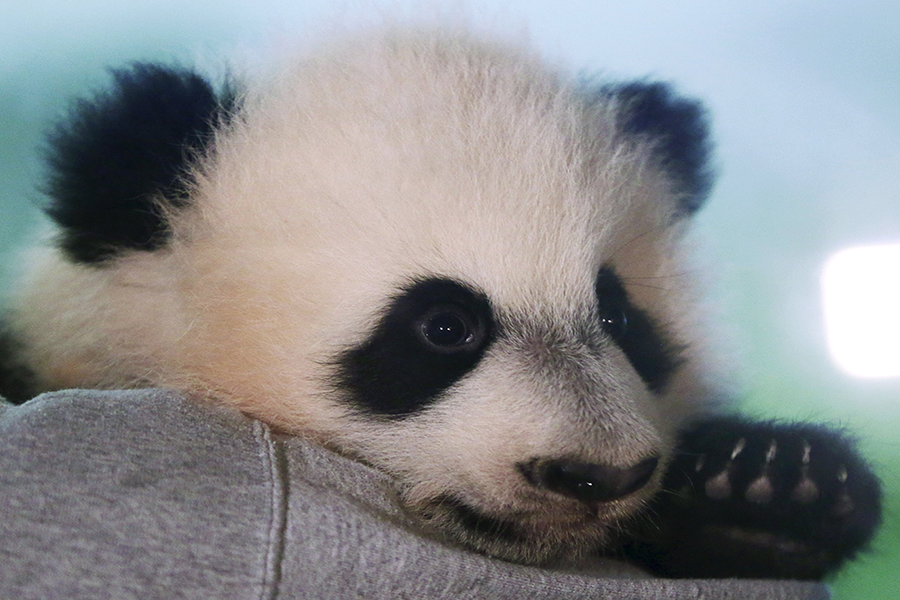Baby panda celebrity, Bei Bei, preparing for his first public appearance
Loading...
Bei Bei, a poster panda for international diplomacy, is growing into a healthy young cub at the National Zoo in Washington, D.C.
On Jan. 16, the nearly 4-month-old will take his first steps into the zoo’s outdoor panda habitat, which has been closed since Bei Bei was born in August. This means the public – that has so far been diligently following the cub’s early life in an indoor bear den through the zoo’s panda cam – will for the first time be able to visit him in person.
Since the first pandas were gifted to the national zoo in 1972, they have become perhaps the most popular zoo animal in the country. Bei Bei’s human caretakers go to extreme lengths to mimic his real-world habitat of rocky, lush terrain. They spend days and nights tending to the bear’s every need, assiduously monitoring his development.
At a nature preserve in China’s Sichuan province – the native land of the giant panda – caretakers go so far as to wear full panda costumes to interact with cubs who will be released into the wild. In some cases, as The Atlantic reports, they even smear their costumes with panda urine and feces to stay true to nature.
This international panda doting (or “panda-monium,” as America's collective panda obsession has come to be known) may seem frivolous, but it could be the only way to save the panda from extinction. It has already led to a dramatic improvement in the survival rate of pandas bred in captivity over the last 20 years, as the Associated Press reports.
Scientists believe there are about 1,864 pandas left in the wild, according to the Smithsonian. More than 300 pandas live in zoos and breeding centers around the world, mostly in China.
With their irresistible, baby-like wobble and giant eyes set in black patches, pandas first came to the US in 1972 as a symbol of a thawing relationship between the US and China. At a dinner during US president Richard Nixon’s historic visit to China that year, meant to improve relations between the two countries, First Lady Pat Nixon mentioned to Chinese premier Zhou Enlai that she loved pandas. A couple of months later, the president and first lady welcomed two giant pandas to the National Zoo.
Today, the US rents pandas from China to study them in order to improve their conservation, and to feed an insatiable public appetite for panda watching.
Bei Bei, whose name means “precious treasure,” is on a $10 million loan to the D.C. zoo, along with his sister, Bao Bao, and parents Mei Xiang and Tian Tian, who arrived in the nation’s capital in December 2000. Bei Bei will return to China when he turns 4, as will the 2-and-a-half-year-old Bao Bao, to join a breeding program.







